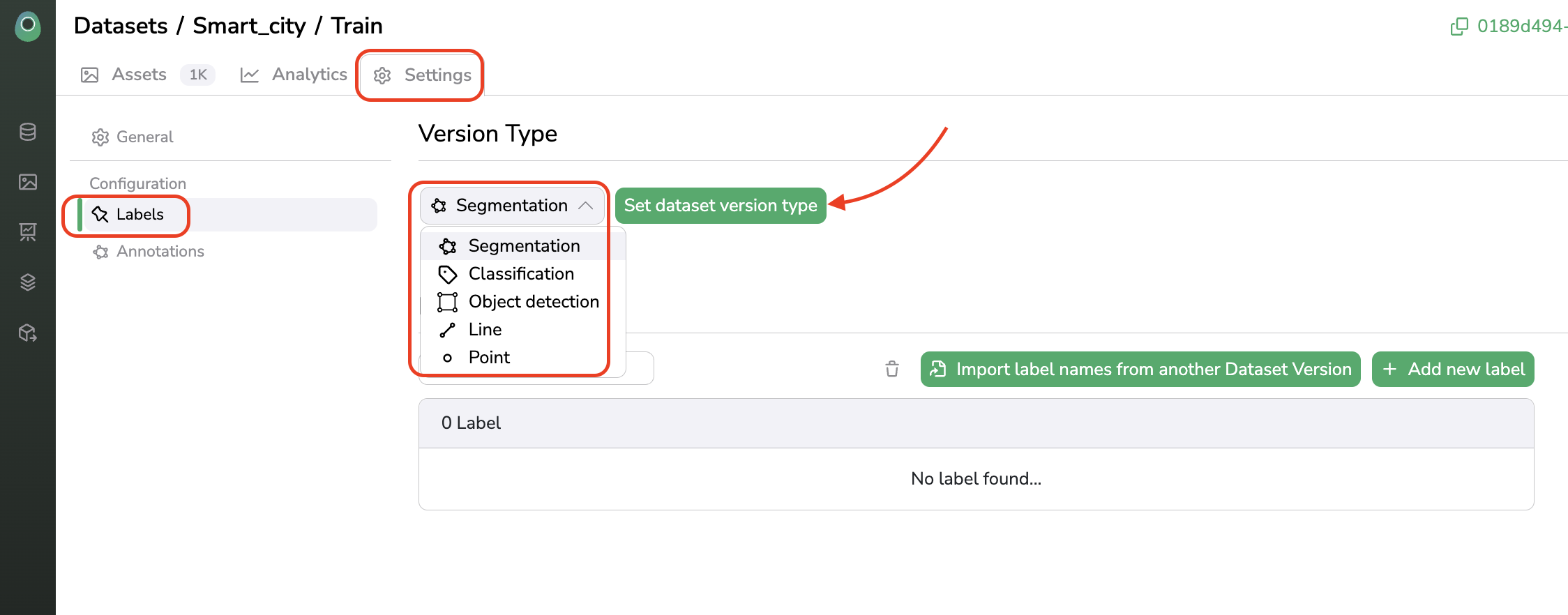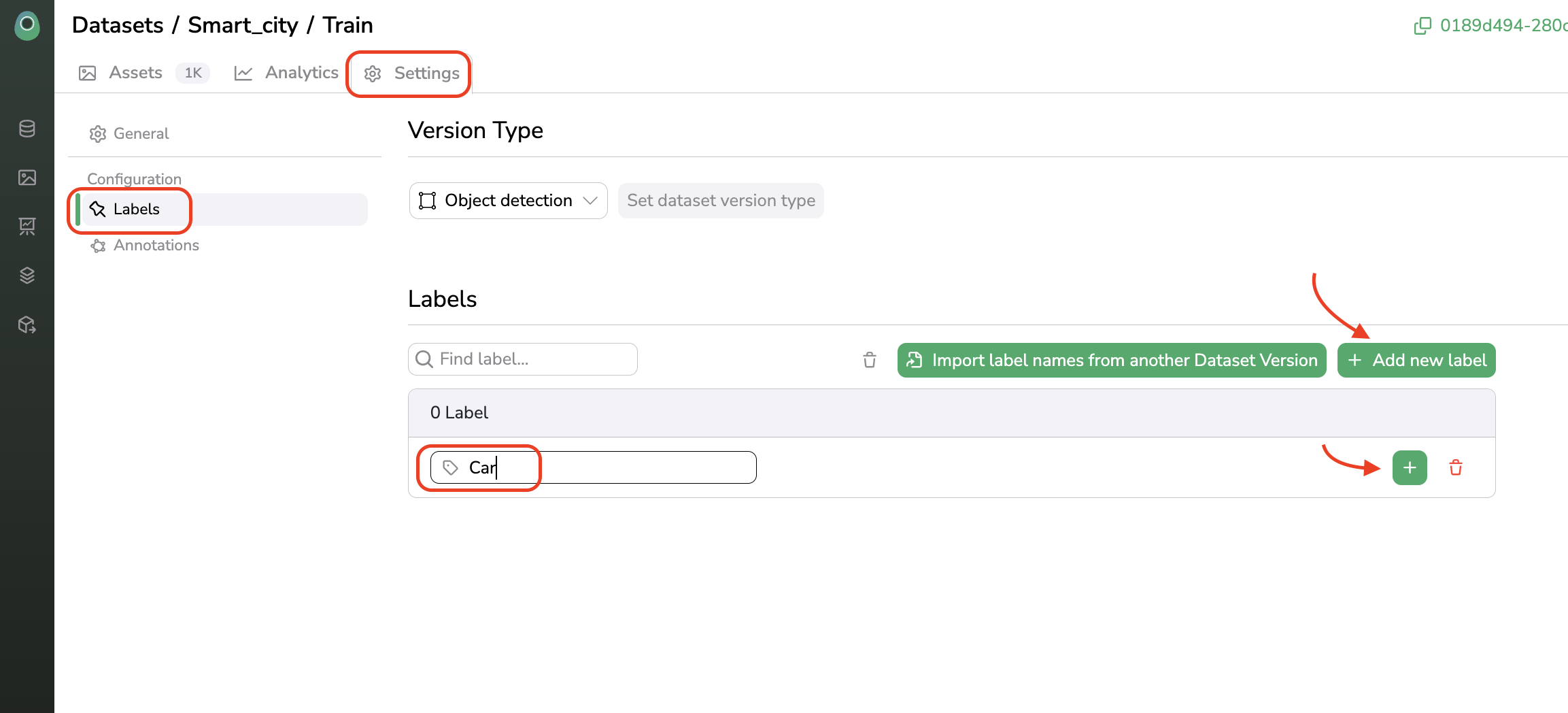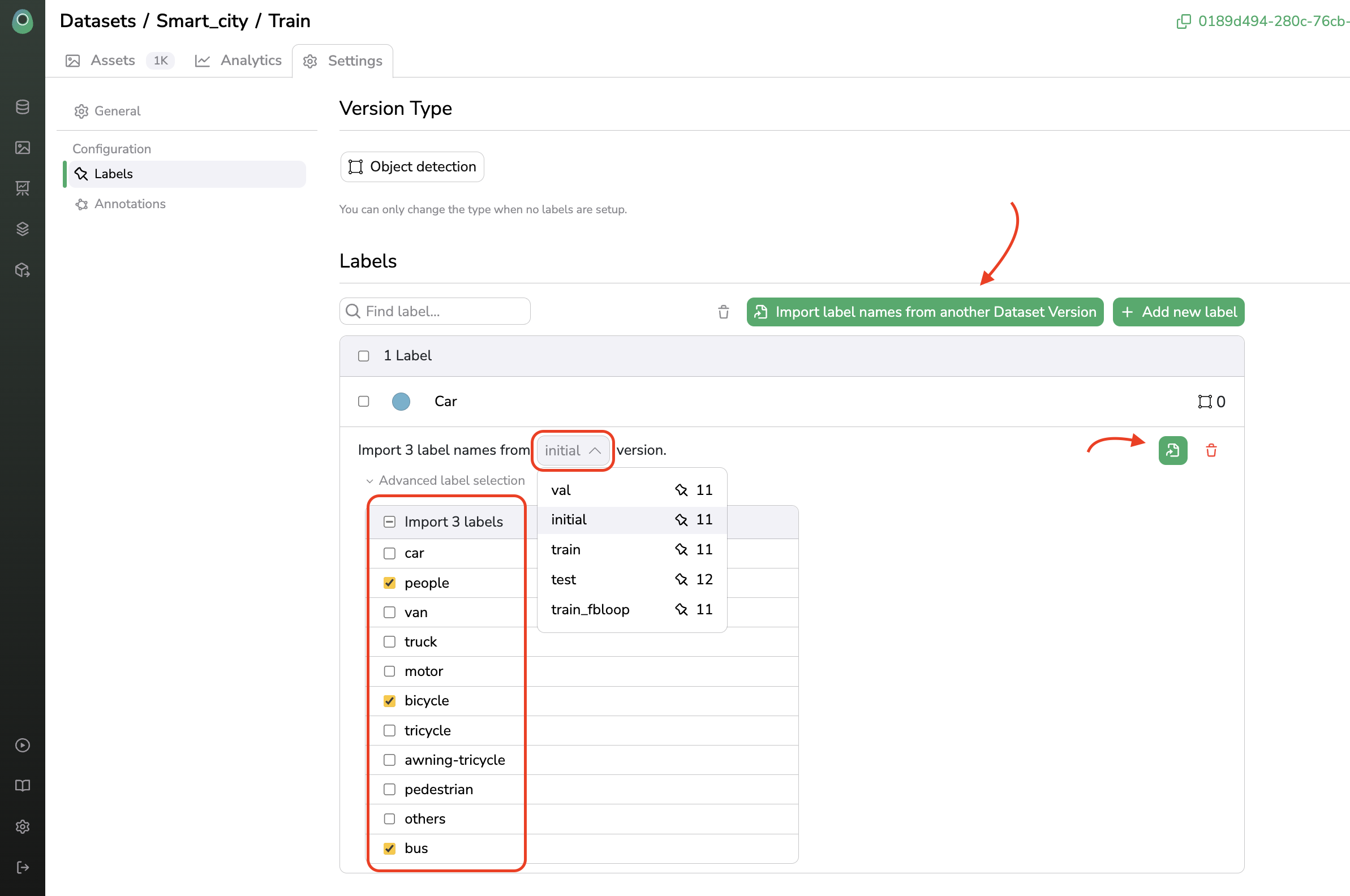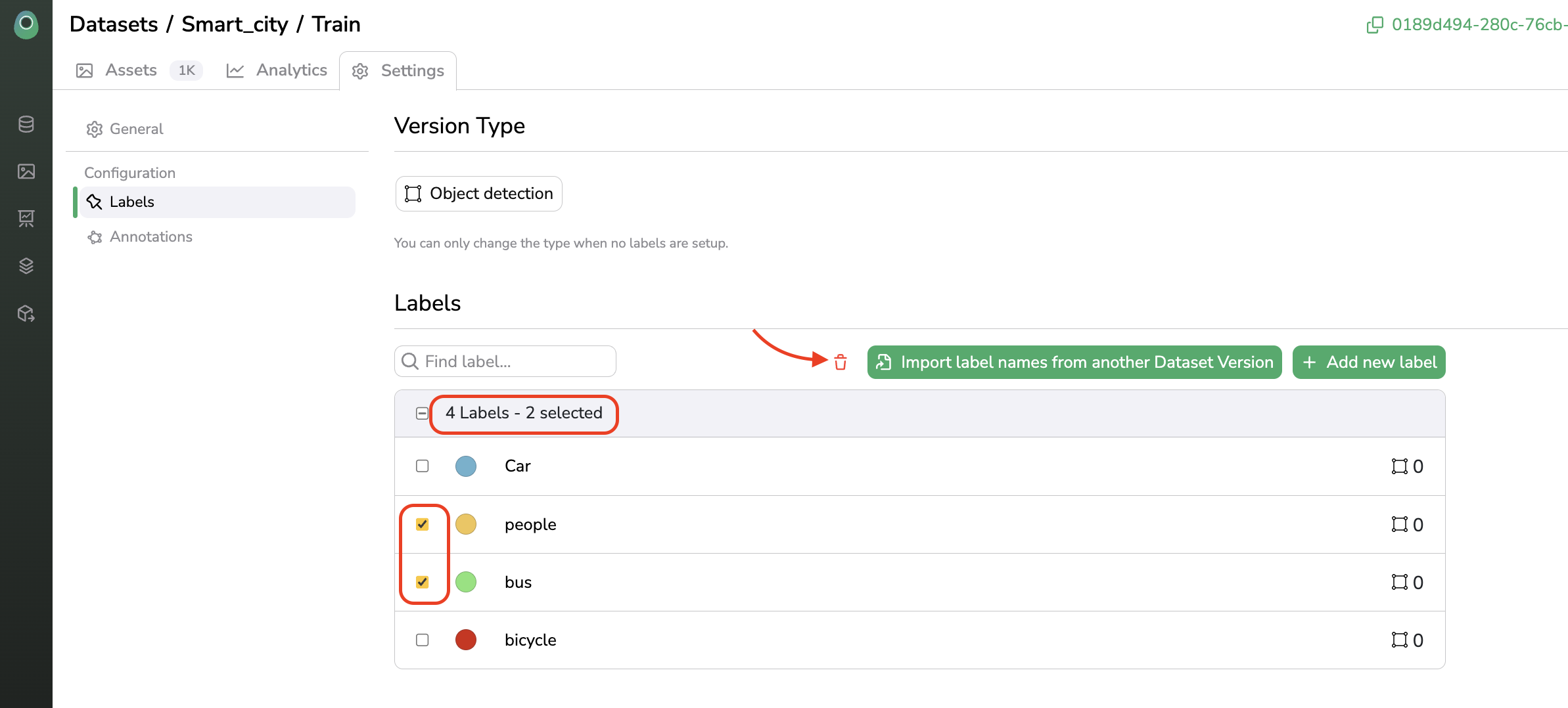Dataset - Set up the dataset
Now that our DatasetVersion has been created and populated with Asset, it is time to start dealing with Annotation.
1. DatasetVersion Detection Type and Label
DatasetVersion Detection Type and LabelBefore annotating the Asset composing our DatasetVersion, we need to initialize it by defining the Detection Type and the Label so that Picsellia will be able in the future to ensure consistency at each step of the process.
For instance, make sure that the Detection Type of a DatasetVersion is the same as the one of the ModelVersion you might be retraining in the frame of an Experiment.
If you plan to importAnnotationthough an annotation fileThen, you can skip this initialization part as this one will be done automatically by Picsellia while reading the information (Detection Type and
Label) contained in your annotation file during the import.
A. Set DatasetVersion Detection Type
DatasetVersion Detection TypeTo set properly your DatasetVersion, you must go to Settings of the DatasetVersion and jump to the Labels tab. From here, you can first select your Detection Type among Object Detection, Classification, Segmentation, Line, and Point and click on Set dataset version type.

DatasetVersion setup
ChangeDatasetVersionDetection TypeYou can change the Detection Type of a
DatasetVersionif already defined, but to do so, theDatasetVersionmust be free ofLabelmeaning deleting all existingLabel.
B. Create Label
LabelOnce defined, you can start creating your Label, there are two ways to do it.
a. From Scratch
Thanks to the button + Add new label you will create a new and empty Label line. For each new line, you will be asked to give a name to this new Label and click on + to save it.

Labelcreation
b. Importing them from another DatasetVersion
DatasetVersionThanks to the button Import label names from another dataset version you will be able to browse among the Label of other DatasetVersion of the current Dataset. So you just need to select the DatasetVersion name from which you want to import and select the Label names to import in the current DatasetVersion and click on the import icon.

Labelimport
Please note that as only the name of the Label is imported at this step, you can import Label names from DatasetVersion that has another Detection Type.
When all your Label are created, you can visualize them and the number of Shape in the current DatasetVersion with this Label. The set of Label attached to a DatasetVersion is called the Labelmap.
C. Edit Label
LabelAt any moment, you can change the name of a Label by clicking on its name. The name modification will be taken into account as soon as you click on the check mark icon. This operation will change the Label value of all existing Shape with this Label in the Annotation of the current DatasetVersion.
You can also decide to delete one a several Label from your DatasetVersion.
Before doing that you must be aware that deleting a Label will delete all the Shape with this Label from the Annotation in the current DatasetVersion. So use this feature with caution.

Labeledition
If you decide to delete all the Label of a DatasetVersion, it will delete all the Shape from all the Annotation in the current DatasetVersion, meaning that all Annotation will still exist but without any Shape.
2. What is an Annotation?
Annotation?An Annotation is a set of Shape that are linked to an Asset in a DatasetVersion. Each Shape has a Label among the ones defined previously.
For instance, this Asset has an Annotation that contains 2 Car Shape and 3 Person Shape.
A DatasetVersion can be considered as usable for training when all the Asset have at least one Annotation.
There are three ways to create or modify Annotation on Picsellia:
In summary, an Asset of a DatasetVersion has up to one associated Annotation. Each Annotation can have several Shape, each Shape has a Label among the Labelmap defined in the DatasetVersion Settings.
3. Visualize Annotation
AnnotationNow let's consider our DatasetVersion as already annotated.
Thanks to the different views proposed in your DatasetVersion, you can see the Metadata related to Annotation in Table and Details views:

Annotationvisualization
And visualize the different Shape displayed on the image of your Asset through the Grid and Details views:

Shapevisualization
Personalization ofShapevisualizationYou can select the
Shapeyou want to visualize on yourAssetbased on theShapeLabelusing the button x/x Labels in the top-right corner of the view (with x being the number ofLabelin theLabelmapof yourDatasetVersion)
4. Delete Annotations
AnnotationsYou can delete all the Annotation related to one or several Asset, by selecting them, and clicking on More > Delete annotations.

Annotationdeletion
To delete one
Annotationof anAssetthat has many, you can use the Python SDK
5. Analytics
Once your DatasetVersion is annotated, Picsellia will compute several metrics that can be used to assess the quality of your Dataset.
To visualize them, you can jump into the Analytics tab of your DatasetVersion:

Metric visualization
In case an Annotation Campaign is ongoing on the currentDatasetVersionIn case an Annotation Campaign is ongoing, the Analytics tab will be enriched with additional metrics, they are described in details here
Updated 6 months ago